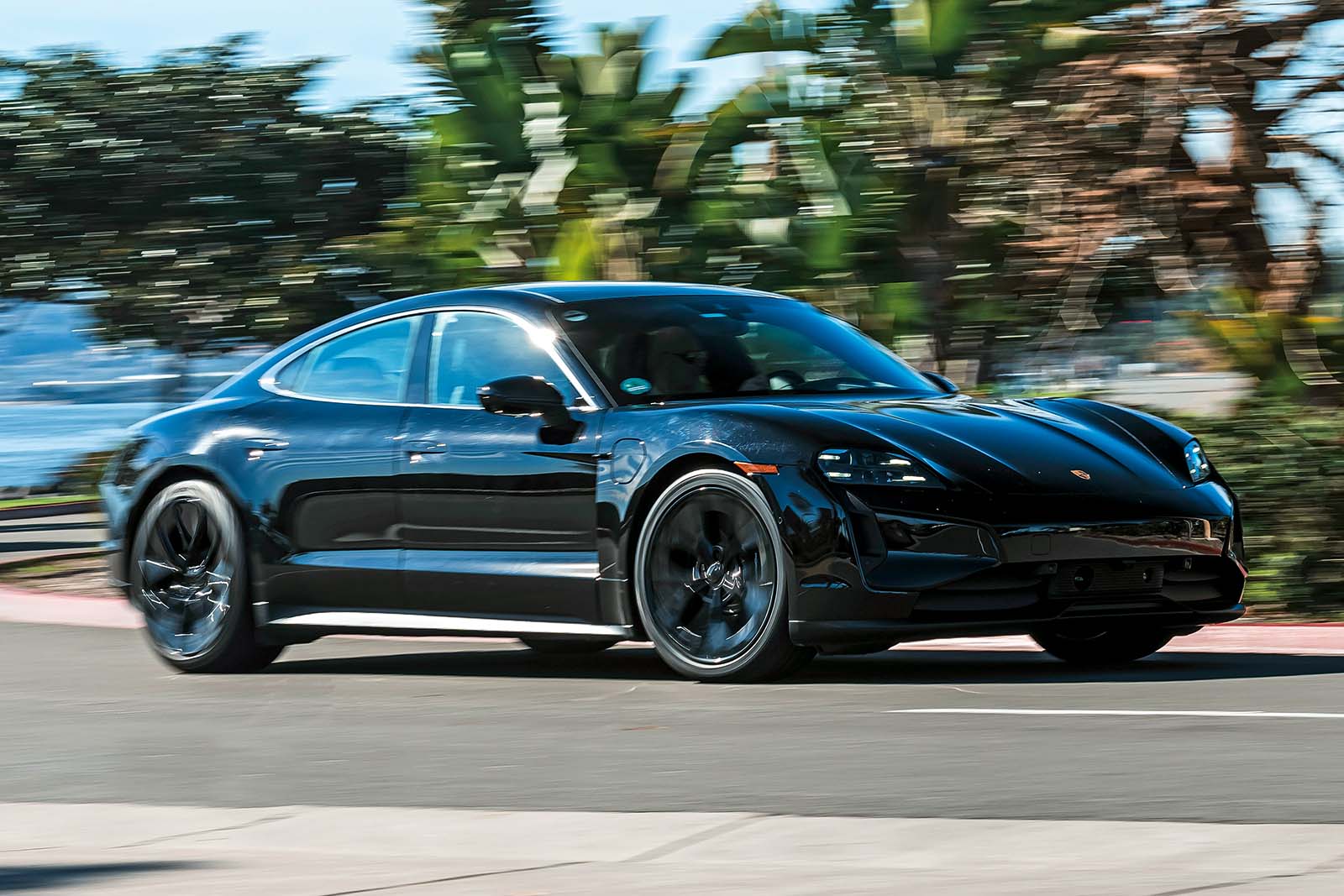New Porsche Taycan first drive: real-world range test
Open gallery The original version had something of an easy ride, but the new car won’t It may be electric, but the Taycan still handles like any Porsche should "We like agile cars, so it’s very important to have a critical view of the weight" said model boss Kevin Giek The charging rate held steady above 300kW for around five minutes Evidently our car was still set up for engineers’ testing The Taycan's charging rate peaked at an amazing 332kW The regenerative brakes can now push out up to 400kW under deceleration Close News by Felix Page 10 mins read 11 February 2024 Follow @felix_page_ Kevin Giek is a remarkably chipper chap, considering that he has one of the toughest jobs in the automotive industry. In his 23 years at Weissach, he has worked pretty much everywhere except the canteen, had a hand in the development of some of Porsche’s most influential cars and, most recently, headed a brutal development programme for the new Taycan in which millions of miles have been covered, in all corners of the world and in the most extreme conditions. This latest exploit could be the most important yet – and not just for him, as director of the Taycan model line, but also for his employer. Arriving four years after the launch of the original Taycan and mere weeks after the unveiling of its SUV sibling, the Macan EV, this is a crucial piece in Porsche’s electrification puzzle as it eyes 80% of its sales being electric by 2030. Related articles When it was launched, the original Taycan – compellingly specified and relatively peerless as it was – had something of an easy ride. The new version won’t. After all, this is a saloon/estate that in just 48 months has sold more than 150,000 examples worldwide, is now Porsche’s best-seller in the UK (incidentally the biggest market globally for the Taycan last year) and, perhaps most importantly, ranks consistently as one of the best-handling and most engaging electric cars on the market. Even at the point in a car’s life when a traditional facelift would usually be called on to sustain its appeal, the Taycan doesn’t feel especially in need of revitalisation. But new rivals seem to appear on a daily basis. There are the obvious contenders like the top-link BMW i4 and Mercedes-Benz EQE, but even some flavours of electric Hyundai and Kia now come pretty close in raw performance and utility terms, while would-be buyers overseas are no doubt having their heads turned by the likes of the Lucid Air and Nio ET7. Not to mention intimidating newbies like the Lotus Emeya and Polestar 5… The Taycan’s raw statistics still stand it in good stead, but the emergence of new technologies, new learnings and new feedback all create opportunities for enhancement that might not be desperately needed – but will surely be welcomed by customers. Giek references the six-decade (and counting) evolution of Porsche’s longest-running model as a benchmark for how tangible and useful improvement can be achieved on this basis: “After 60 years, we always find improvements for our icon, the 911. Every day we find another improvement, and like this we’re developing all our cars. Latest Reviews Kia EV9 View all car reviews Read our review Car reviewPorsche TaycanPorsche’s world-beating EV now comes as a £70k, rear-driven Tesla Model S and BMW i4 rival. Should they worry?Read our review Back to top “Technology moves forward, you get new materials… Development is so fast that even one year after introducing a car, you could have a new idea and say: ‘We should have done this as well.’” Giek is speaking to me from the passenger seat of a near-production-ready prototype, less than a week before Porsche peels back the smattering of remaining camouflage and announces the extent of the technical upheaval that the Taycan has undergone. We are heading south on the I-5 out of Los Angeles towards San Diego, beginning a 300-mile return journey across California that will lay bare, we’re told, the real-world implications of the revisions to this seminal electric car’s battery, motors, chassis, dashboard and design. It might not look it, admits Porsche, but the suggestion is made very clearly that this is effectively an all-new car. It’s evident that we won’t be spending the next six hours talking about its lightly tweaked headlight clusters. You have seen the headlines now: a 422-mile maximum range, up to 939bhp and Disney+ on the front passenger’s own touchscreen. The Taycan has never been short on clickbait-friendly attributes, but the scope of this latest round of updates is so broad as to make it once again among the strongest cards in the Top Trumps deck, after been caught up in various respects by rivals and even some much cheaper metal. Giek actually welcomes competition on the basis that rivalry bree

This is another headline indexed and brought to you by the AUTOMUNDO website.
